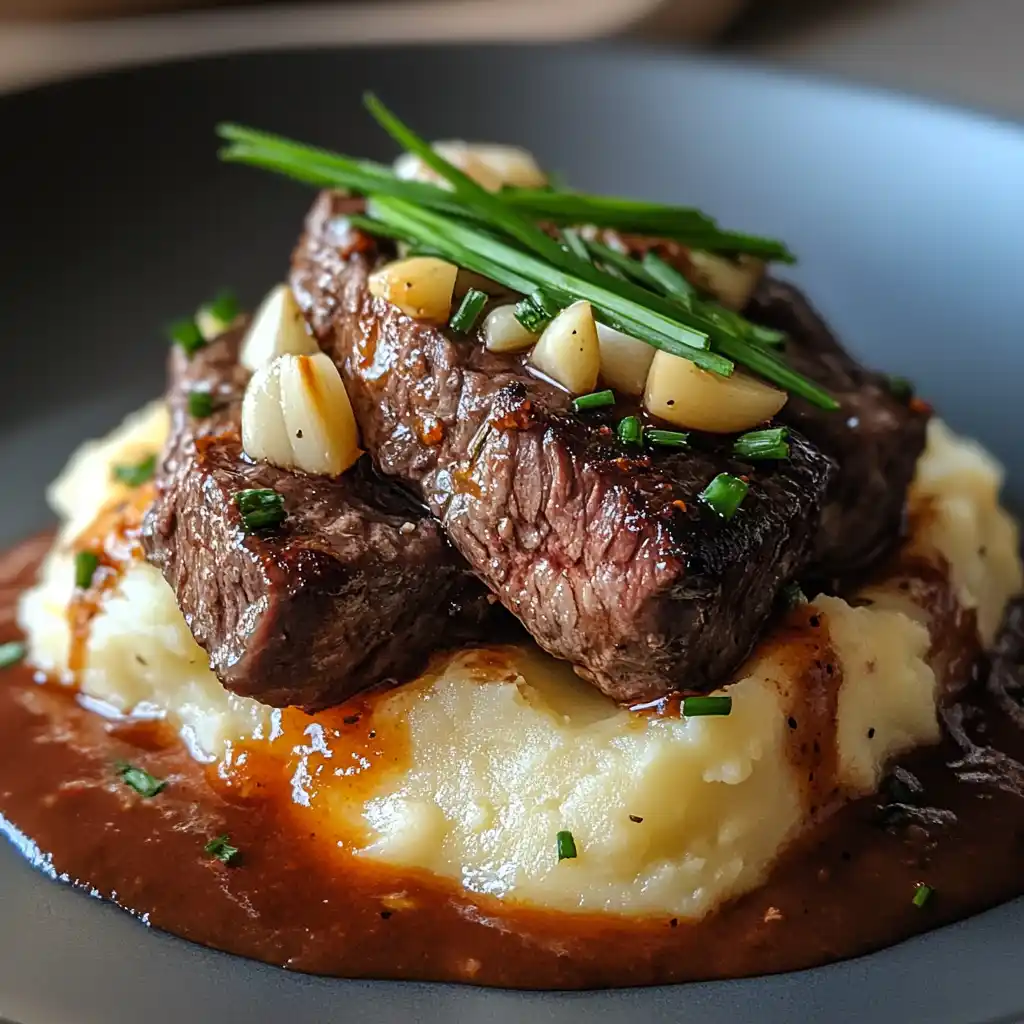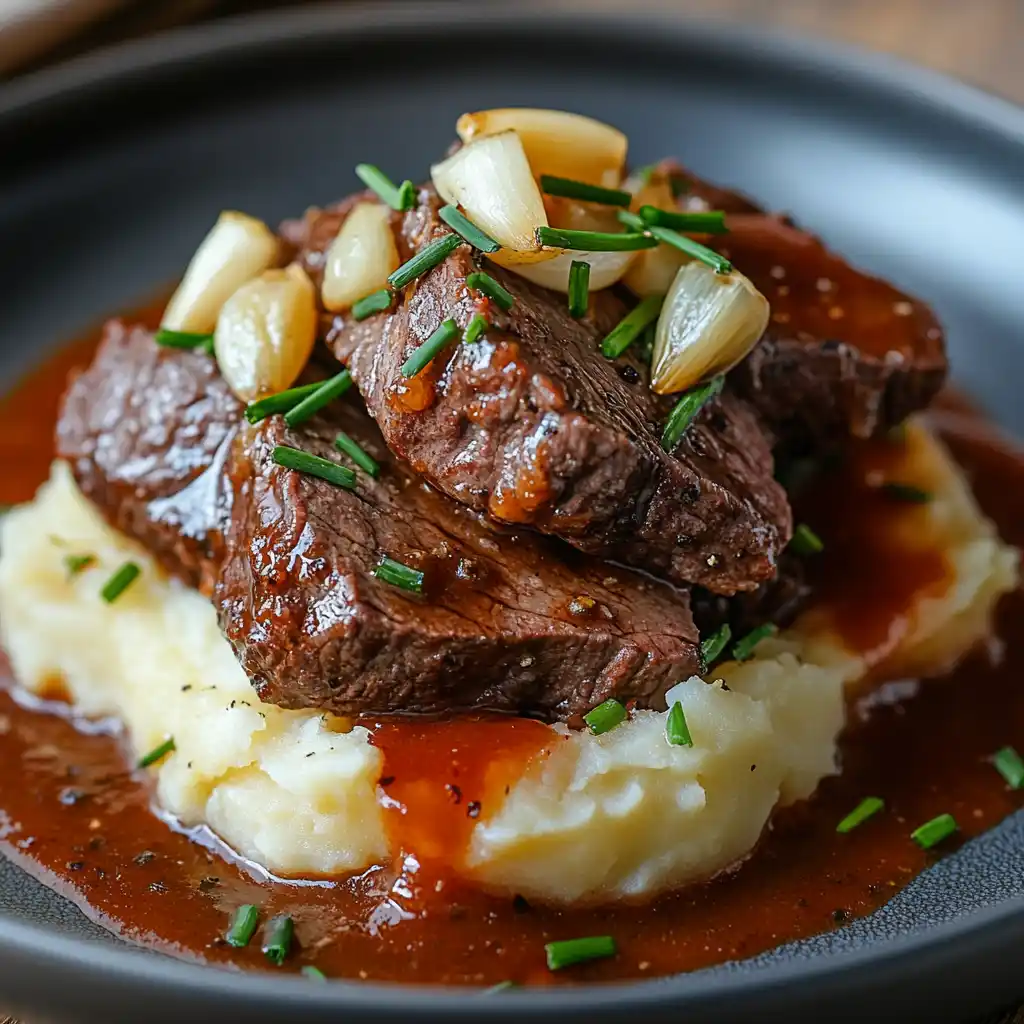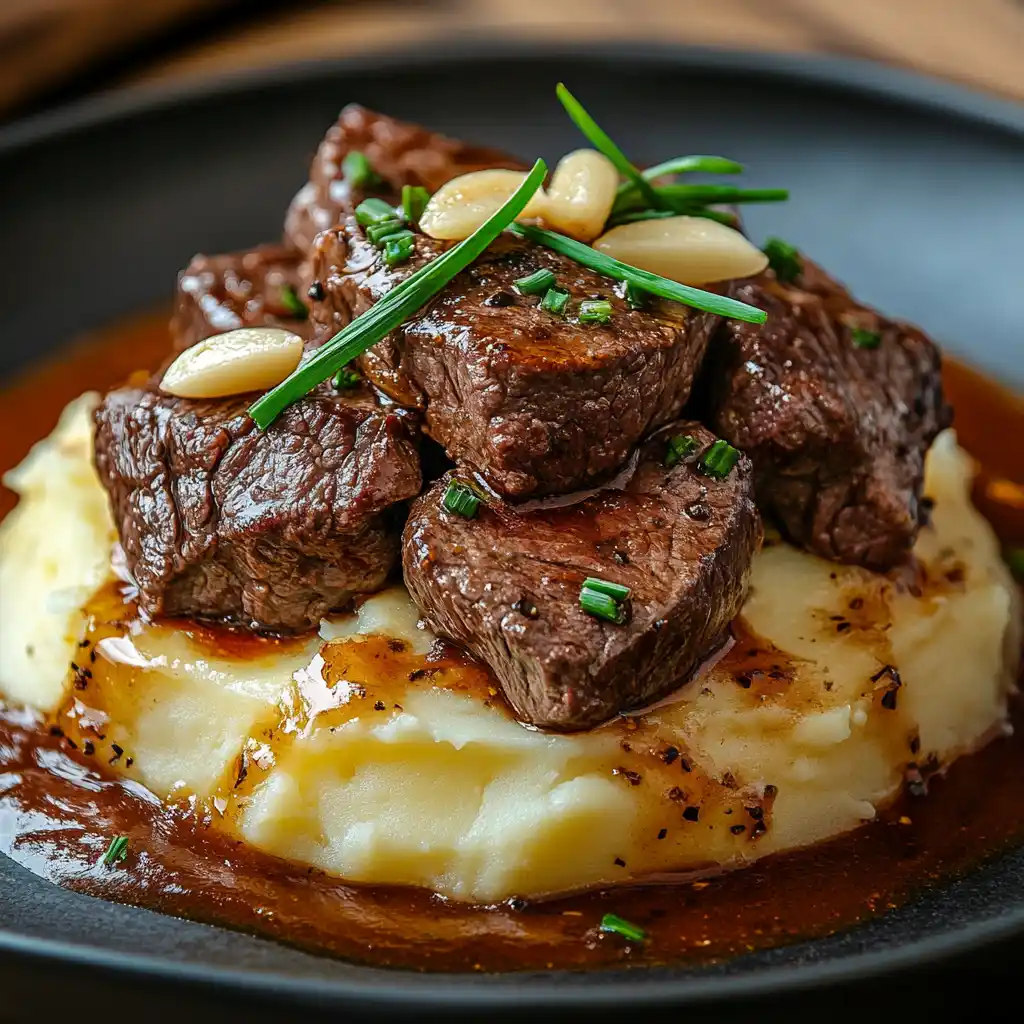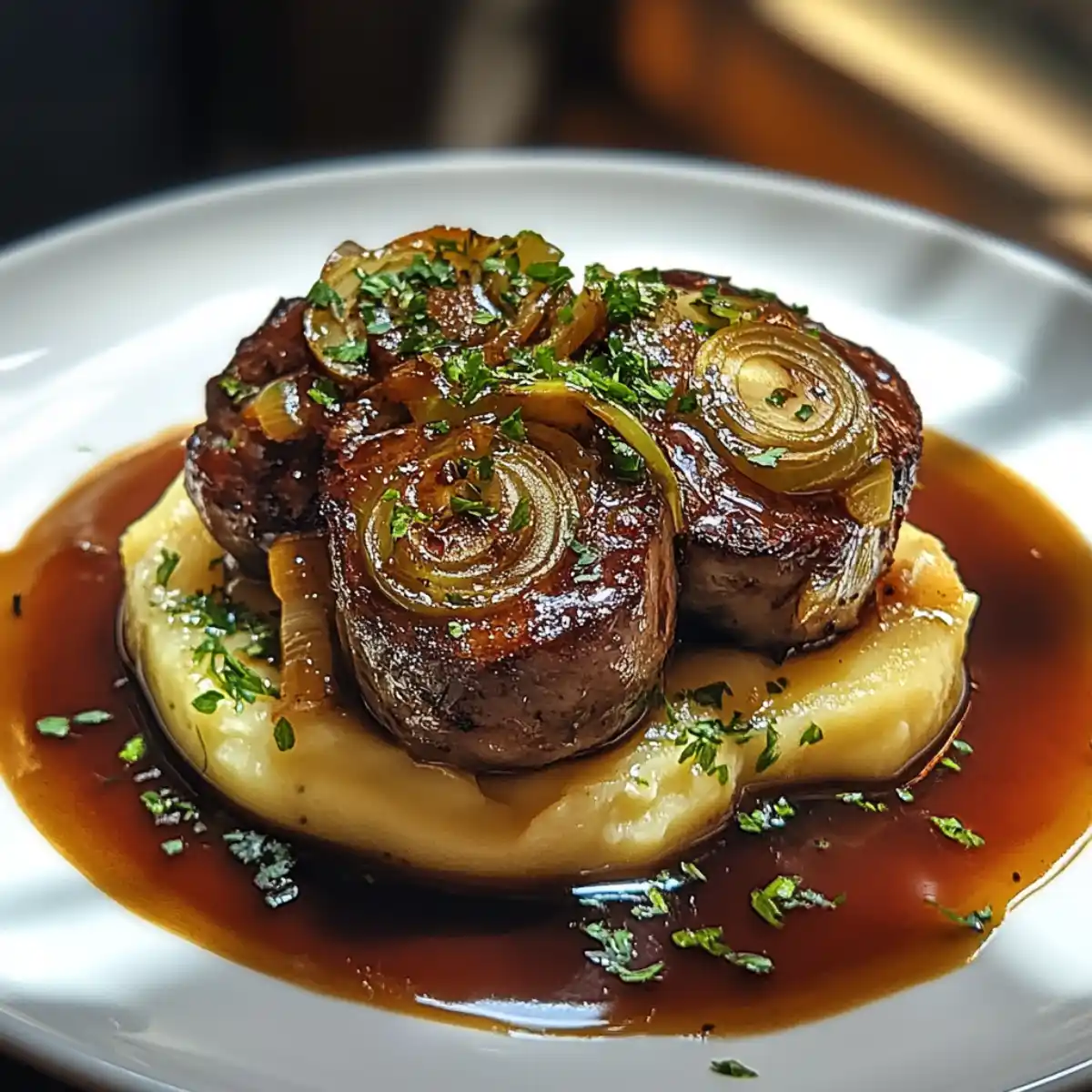
The first time I tasted beef cheek meat, it was a game-changer. I found it in a small bistro in San Francisco. The chef turned this humble cut into a dish that was incredibly tender and full of flavor.
Table of Contents
Beef cheek meat is a hidden gem for home cooks. It’s rich in taste and tender when cooked right. This guide will help you learn how to prepare this amazing meat.
Cooking beef cheek meat is more than just following a recipe. It’s about understanding its unique qualities. From its deep flavor to its ability to soak up marinades, it’s a culinary adventure waiting to happen.
Explore Related Recipes and Tips
Here are some recipes and resources to complement your journey with beef cheek meat, ensuring you create memorable meals:
1. 5 Reasons Why Beef Cheeks Are Perfect
Learn why beef cheeks are a must-have for home cooks and discover tips for maximizing their flavor.
2. What Is Beef Cheek Meat? A Guide to This Rich Cut
Understand the unique qualities of beef cheek meat and how it can elevate your cooking.
3. Delicious Beef Cheek Meat: Tender, Flavorful Cuts
Explore techniques and recipes to make the most of this flavorful cut, from slow-cooked delights to quick dishes.
4. Easy Crockpot Meals for Simple Dinner
Discover how to use your crockpot to create tender and flavorful meals, perfect for beef cheek recipes.
5. Homemade Fudge Rounds: 5 Irresistible Recipes
Pair your savory dishes with sweet treats for a balanced and satisfying meal experience.
Key Takeaways
- Beef cheek meat is a premium cut with exceptional tenderness
- Slow cooking methods work best for maximizing flavor
- Proper preparation is crucial for achieving perfect texture
- This cut offers incredible versatility in different cuisines
- Understanding cooking techniques unlocks beef cheek meat’s potential
Understanding Beef Cheek Meat: A Premium Cut for Slow Cooking
Beef cheek meat is a hidden treasure in cooking. It turns simple meals into special dining moments. This cut comes from a cow’s cheeks, making it rich and flavorful, loved by chefs.

Anatomy and Characteristics of Beef Cheeks
Beef cheek meat is known for its great texture and taste. It’s found in the cow’s face, where muscles work hard. This makes the meat:
- Dense and muscular
- High in collagen
- Full of marbling
- Deeply flavored
Nutritional Benefits of Facial Meat
Beef cheek meat is very nutritious. This protein-rich cut offers essential nutrients for muscles and health. It’s full of vitamins and minerals, including:
- High-quality protein
- Iron and zinc
- B-complex vitamins
- Healthy fats
Why Chefs Love Working with Beef Cheeks
“Beef cheeks are a culinary canvas waiting to be transformed into something extraordinary.” – Celebrity Chef Michael Rodriguez
Chefs love beef cheek meat for its versatility and flavor absorption. Its natural tenderness is perfect for slow-cooking. This makes dishes that are tender and delicious.
Essential Equipment and Tools for Preparing Beef Cheeks

Preparing delicious braised beef cheeks needs more than just cooking skills. The right tools can make your cooking better and ensure top-notch results. Choosing the right tools is key for cooking beef cheek meat perfectly.
Your kitchen should have several important items for beef cheeks:
- Heavy-bottomed Dutch oven: Essential for even heat during braising
- Sharp boning knife for precise trimming
- Cutting board with non-slip surface
- Meat thermometer for checking internal temperature
- Tongs for handling beef cheeks
“The right tool can turn a good dish into an extraordinary culinary experience.” – Professional Chef
Invest in quality cookware for long, slow cooking. A cast-iron Dutch oven is great for braised beef cheeks. It keeps heat steady and enhances flavors.
Special tools make prep easier and more precise. A sharp boning knife helps remove excess fat or silverskin. This ensures your beef cheeks are perfectly trimmed before cooking.
- Recommended knife: 6-inch boning knife with flexible blade
- Ideal cutting board: Large wooden or plastic surface
- Best cooking vessel: Enameled cast-iron Dutch oven
With these essential tools, you’ll be ready to make tender, flavorful braised beef cheeks. They will surely impress any food lover.
Preparing and Trimming Raw Beef Cheek Meat
Beef cheek meat is a delicious cut that needs careful prep to shine. Learning how to clean, trim, and store it will make your dish amazing.
Professional chefs say prep is key with beef cheek meat. It involves several important steps for the best taste and texture.
Cleaning and Removing Silverskin
The silverskin on beef cheeks can make it tough. To get rid of it:
- Use a sharp boning knife with a thin blade
- Work carefully to separate the thin, silvery membrane from the meat
- Hold the knife at a slight angle to avoid removing excess meat
- Pull the silverskin gently as you cut underneath it
Portioning for Different Recipes
How you cut beef cheek meat depends on your recipe. You want pieces that cook evenly:
- Cut into 2-3 inch chunks for stews and braises
- Slice thinner for tacos or shredded preparations
- Consider the final dish’s cooking method
Proper Storage Methods
Storing beef cheek meat right keeps it fresh and flavorful:
- Refrigerate immediately after purchasing
- Use within 2-3 days of buying
- Store in airtight containers or sealed plastic bags
- Keep at 40°F or below
“The secret to an incredible cheek meat recipe is in the preparation.” – Professional Chef
Pro tip: Always pat the beef cheeks dry with paper towels before cooking. This ensures perfect browning and maximum flavor.
Basic Braising Technique for Tender Beef Cheeks
Learning to braise beef cheeks turns this tough cut into a tender treat. Braising requires patience and care to bring out its rich flavors. The slow-cooking method breaks down tough tissues, making the beef cheeks incredibly tender.
- Select high-quality beef cheeks with good marbling
- Pat the meat dry with paper towels
- Season generously with salt and pepper
- Sear the meat in a hot, heavy-bottomed pan
- Create a flavorful braising liquid
“The secret to perfect braised beef cheeks is low and slow cooking that allows the meat to become supremely tender.” – Professional Chef
Your braising liquid is key for rich flavors. Here are some classic mixes:
| Liquid Base | Complementary Flavors |
|---|---|
| Red Wine | Beef stock, thyme, garlic |
| Beer | Onions, bay leaves, mustard |
| Beef Stock | Root vegetables, rosemary |
When slow-cooking beef cheeks, keep the heat low, between 275-325°F. This gentle heat breaks down tough fibers, making the meat tender and luxurious.
Pro tip: Cover your pot tightly and check the liquid often. The meat should be mostly covered, allowing it to braise and steam. This ensures your beef cheeks are at their most tender.
Creating the Perfect Beef Cheek Ragu
Beef cheek ragu is the ultimate slow-cooked comfort food. It turns tough beef into a rich, flavorful sauce that sticks to pasta perfectly. The secret is in the cooking techniques that bring out the meat’s full flavor.
Selecting the Right Cooking Wine
Your choice of wine greatly affects the ragu’s taste. Choose strong red wines with good acidity:
- Chianti Classico
- Barbera
- Sangiovese
Aromatics and Herb Combinations
The base of a great beef cheek ragu is a mix of aromatics:
- Fresh rosemary sprigs
- Thyme leaves
- Bay leaves
- Garlic cloves
- Diced onions
“Great ragu is about patience and understanding how flavors develop.” – Chef Mario Batali
Mastering Sauce Reduction
Reducing the sauce is key. Simmer it slowly to make it thicker and more intense. You want a sauce that coats the meat well.
Pro tip: The beef should be so tender it falls apart with a fork. This means you’ve cooked it just right.
Mexican-Inspired Beef Cheek Barbacoa and Tacos
Beef cheek barbacoa is a treasure in Mexican cooking. It turns tough meat into a delicious treat. These tacos show how slow-cooked facial meat can add rich flavors and soft textures to your cooking.
To make beef cheek barbacoa, focus on slow-cooking. This breaks down the meat, making it soft. The secret is patience and the right spices.
“Great beef cheek tacos are all about technique and understanding the meat’s unique characteristics.” – Chef Maria Rodriguez
- Select high-quality beef cheeks with minimal fat
- Marinate meat in traditional Mexican spices
- Cook slowly using braising or slow-cooker methods
- Shred meat for authentic taco filling
Essential Spices for Beef Cheek Barbacoa
| Spice | Flavor Profile | Quantity |
|---|---|---|
| Cumin | Earthy | 2 tablespoons |
| Dried Chilies | Smoky Heat | 3-4 whole |
| Garlic | Pungent | 4 cloves |
| Oregano | Herbal | 1 tablespoon |
Your beef cheek tacos will taste best with fresh corn tortillas, diced onions, cilantro, and lime. The deep flavor of slow-cooked beef cheek barbacoa makes for a memorable taco experience. It feels like a trip to Mexico’s streets.
Slow-Cooker Methods for Beef Cheek Meat
Slow-cooking beef cheek meat makes it tender and delicious. The slow cooker is key for tender beef cheeks with little effort. You can make restaurant-quality dishes at home with the right techniques.
Mastering slow-cooked beef cheeks needs patience and detail. The right steps can turn this tough cut into a culinary masterpiece.
Temperature Control Guidelines
Controlling the temperature is key when cooking beef cheek meat. Follow these guidelines:
- Low setting (195-205°F): Ideal for most beef cheek recipes
- Medium setting (210-220°F): Faster cooking, less moisture retention
- High setting (230-240°F): Use sparingly to prevent meat from becoming tough
Timing and Doneness Tests
Cooking times for slow-cooked beef cheeks vary. Use these signs to check if it’s done:
| Cooking Time | Tenderness Indicator | Recommended Action |
|---|---|---|
| 4-6 hours | Slightly firm | Continue cooking |
| 6-8 hours | Fork-tender | Perfect doneness |
| 8-10 hours | Falling apart | Ready to serve |
Troubleshooting Common Issues
Even experienced cooks face challenges with beef cheek meat. Here are quick fixes:
- Tough meat: Increase cooking time by 1-2 hours
- Dry texture: Add more liquid or reduce cooking temperature
- Lack of flavor: Marinate beef cheeks before cooking
“The key to perfect slow-cooked beef cheeks is patience and low, consistent heat.” – Professional Chef
With these techniques, you’ll make beef cheek meat tender and flavorful. It will impress even the most discerning food lovers.
Wine Pairing and Serving Suggestions
Make your beef cheek meat meal special with the right wine and serving style. Beef cheeks have a deep flavor that needs a wine match.
- Full-bodied red wines like Cabernet Sauvignon
- Robust Syrah or Shiraz
- Aged Bordeaux blends
- Tuscan Sangiovese wines
Choose wines that are complex enough to stand up to the meat’s rich taste. The right wine can take your dish from good to great.
“The right wine doesn’t just accompany a meal—it elevates the entire culinary experience.” – Culinary Wine Expert
Here are some serving tips for beef cheek meat:
- Plate on warm ceramic dishes
- Garnish with fresh herbs
- Serve alongside creamy polenta or roasted vegetables
- Use white plates to highlight the meat’s rich color
Temperature is key when serving beef cheek ragu. Let it rest for 5-10 minutes after cooking. This helps the flavors meld and the meat stay tender.
Storage and Reheating Tips for Cooked Beef Cheeks
Keeping beef cheek meat tasty and tender is key. Whether it’s beef cheek carnitas or a hearty braise, right storage and reheating keep it delicious for days.
Refrigeration Basics for Beef Cheek Meat
Cool cooked beef cheek meat to room temperature in two hours. Use airtight containers to keep it moist and stop bacteria. Beef cheek dishes stay fresh in the fridge for 3-4 days.
Freezing Methods for Long-Term Storage
- Wrap beef cheek meat tightly in freezer-safe plastic wrap
- Use vacuum-sealed bags for maximum freshness
- Label containers with the date of freezing
- Freeze beef cheek carnitas for up to 3 months
Reheating Techniques
Reheat beef cheek meat gently to keep it tender. Low and slow reheating helps keep moisture and flavor.
| Reheating Method | Temperature | Recommended Time |
|---|---|---|
| Oven | 275°F | 15-20 minutes |
| Slow Cooker | Low Setting | 1-2 hours |
| Stovetop | Low Heat | 10-15 minutes |
“The secret to great leftover beef cheek meat is gentle reheating and adding a splash of broth to prevent drying out.” – Professional Chef
Creative Leftover Ideas
Turn leftover beef cheek meat into new dishes. Shred it for tacos, mix into salads, or make tasty sandwiches. This way, you enjoy more meals without wasting food.
Conclusion
Exploring beef cheek meat opens a world of rich, tender flavors. It turns simple meals into amazing dishes. You’ve learned how to cook this often-overlooked cut in many ways.
You’ve seen how to make braised beef cheeks and Mexican barbacoa. These methods bring out deep flavors. Now, you can make restaurant-quality meals at home.
Beef cheek meat is very versatile. You can slow-cook it, braise it with wine, or make traditional Mexican dishes. Each method creates unique textures and tastes. These will wow your family and friends.
The secret is patience and knowing the meat’s special qualities. Your cooking journey is just starting. We encourage you to share your beef cheek meat recipes and stories.
Every new recipe brings new ideas and techniques. It helps you get better at cooking. Remember, cooking is a journey, and beef cheek meat is a great canvas for your creativity.
Now, you’re ready to make amazing dishes with beef cheek meat. Take on the challenge, trust your skills, and enjoy the delicious journey of cooking with this meat.
FAQ
What exactly are beef cheeks?
Beef cheeks come from a cow’s cheek area. They are tough but full of collagen, perfect for slow cooking. This makes them tender and rich when cooked low and slow.
How long should I cook beef cheeks?
Cook beef cheeks for 3-4 hours when braising. This breaks down the tough tissues, making the meat tender. Use a low temperature of 300-325°F for the best results.
What are the best cooking methods for beef cheeks?
Braising and slow cooking are top choices for beef cheeks. These methods make the meat tender and flavorful. Try beef cheek ragu, barbacoa, carnitas, or classic braised beef cheeks.
Where can I buy beef cheeks?
Find beef cheeks at specialty butcher shops, high-end grocery stores, or from local farmers. Butchers can special order them if needed. Online meat suppliers also offer beef cheeks for delivery.
Are beef cheeks expensive?
Beef cheeks are moderately priced, often cheaper than tender cuts. Prices range from $8-$15 per pound. They’re a cost-effective option for feeding many and creating flavorful dishes.
How do I trim beef cheeks before cooking?
Trim the silverskin and excess fat from beef cheeks. Use a sharp knife to remove the thin, silvery membrane. This makes the meat tender and allows seasonings to penetrate better.
Can I freeze beef cheeks?
Yes, freeze beef cheeks raw or cooked. Wrap raw cheeks in butcher paper or vacuum-seal for up to 3-4 months. Cooked cheeks can be frozen for 2-3 months. Always label and thaw properly in the fridge.
What wines pair well with beef cheek dishes?
Bold red wines pair well with beef cheeks. Try full-bodied wines like Cabernet Sauvignon, Syrah, or Malbec. For braised or ragu, a robust Italian red like Barolo or Chianti is great.
Are beef cheeks nutritious?
Beef cheeks are nutritious, packed with protein, iron, and zinc. They also have collagen, which is good for joints and skin. Slow cooking can make them a nutrient-dense protein source.
Can I make beef cheek tacos?
Absolutely! Beef cheek tacos are delicious and popular. Slow-cook the cheeks with barbacoa spices, then shred. Serve in corn tortillas with onions, cilantro, and salsa for a flavorful meal.

